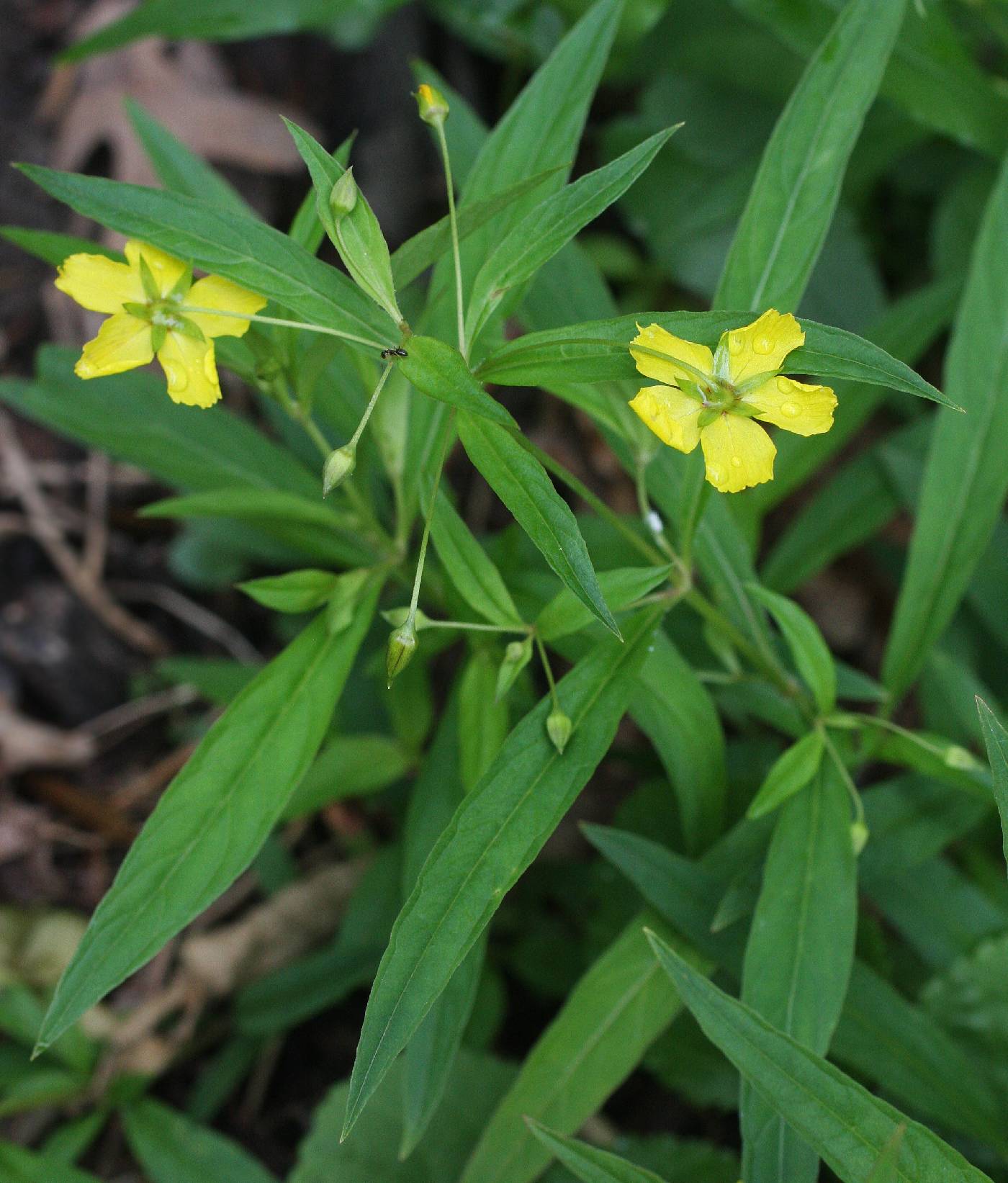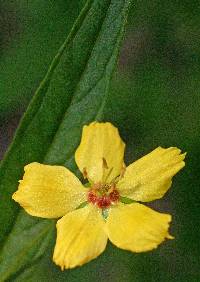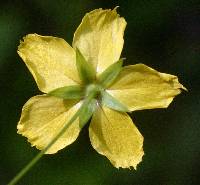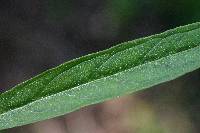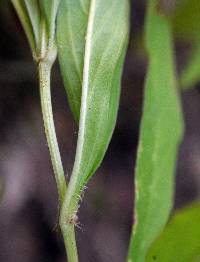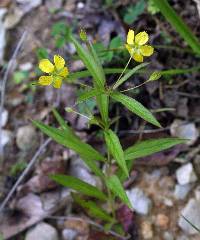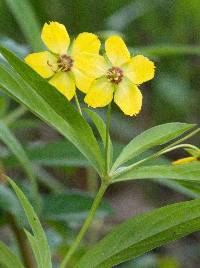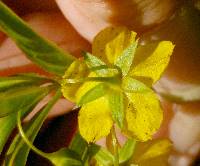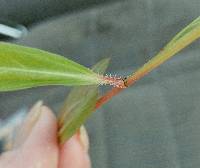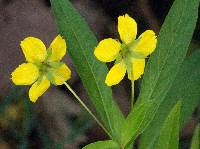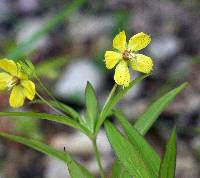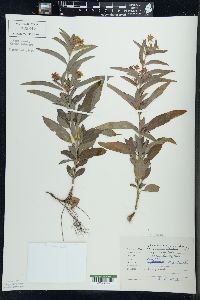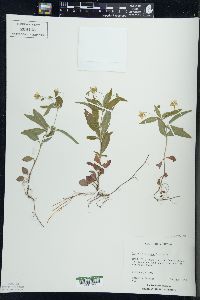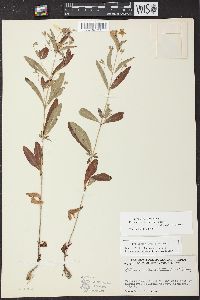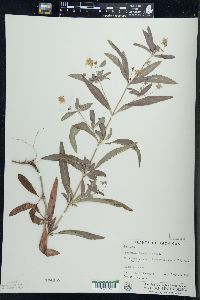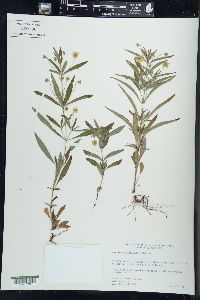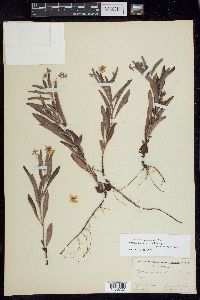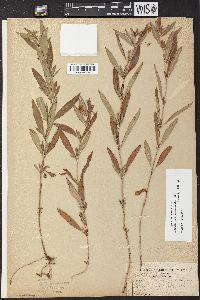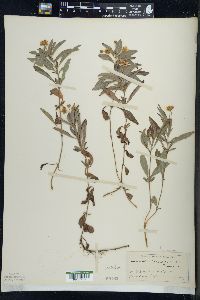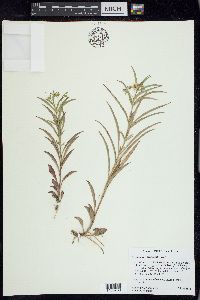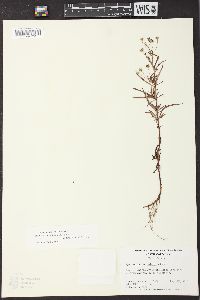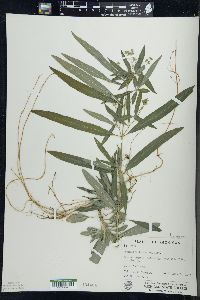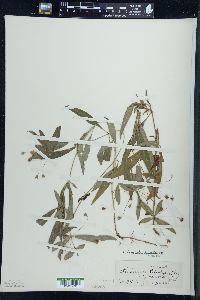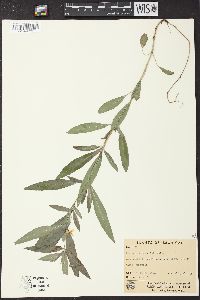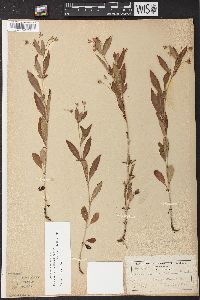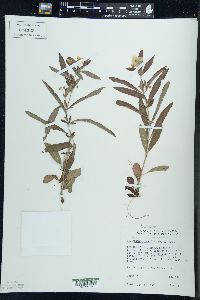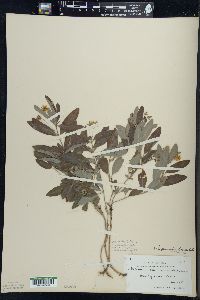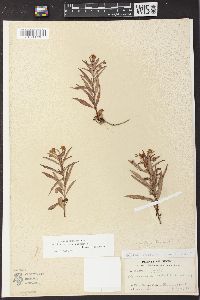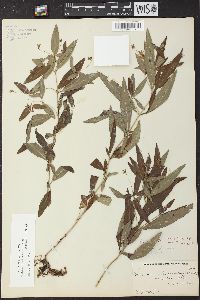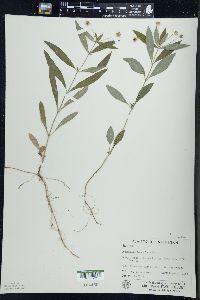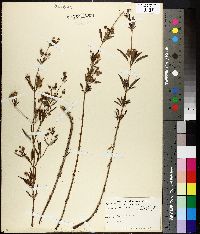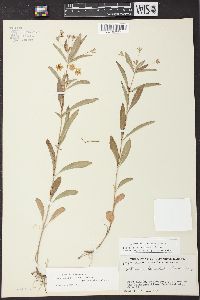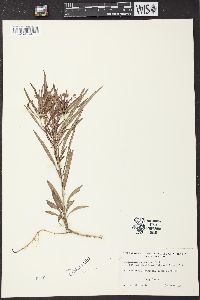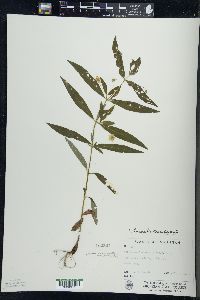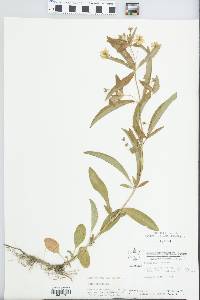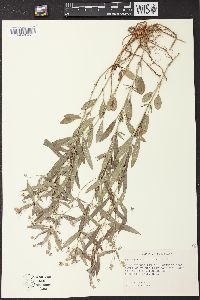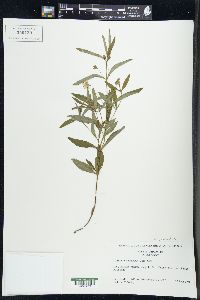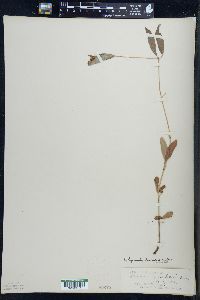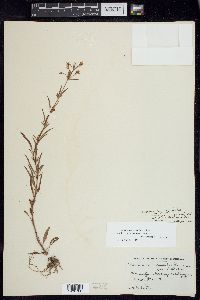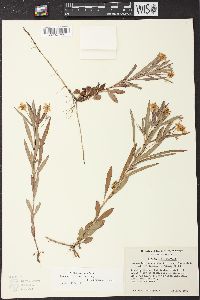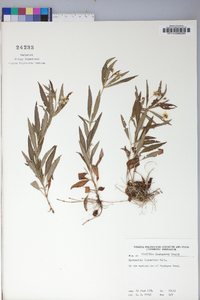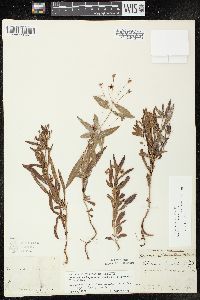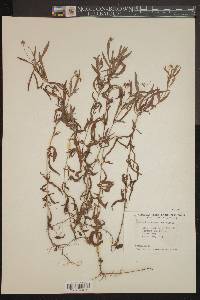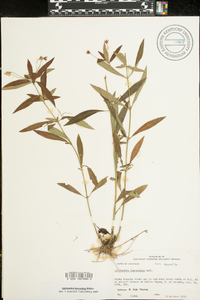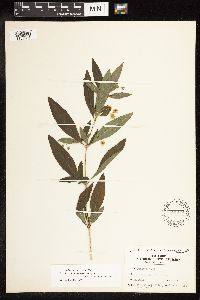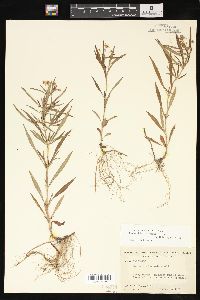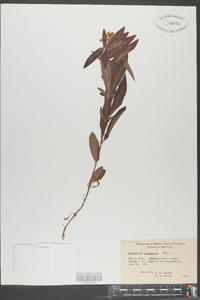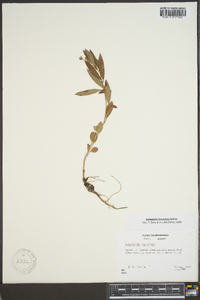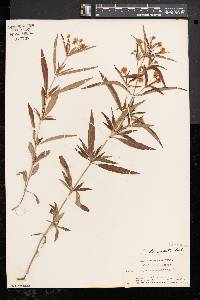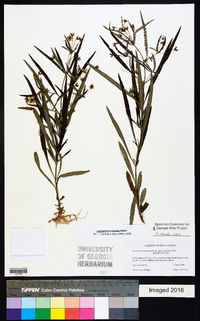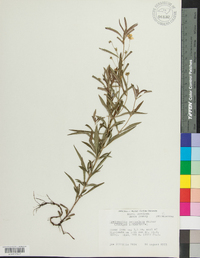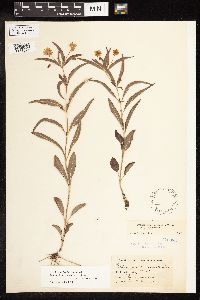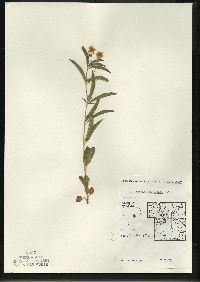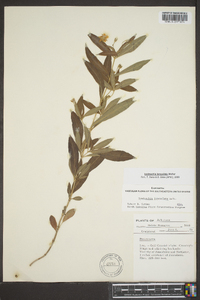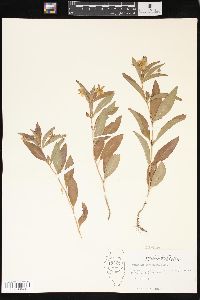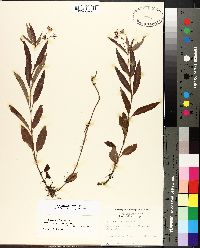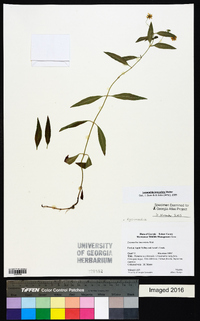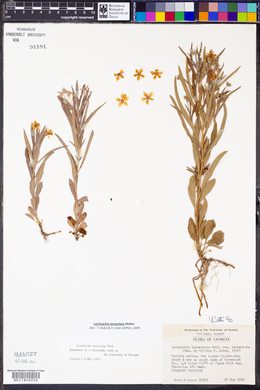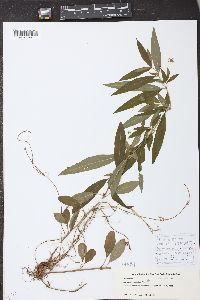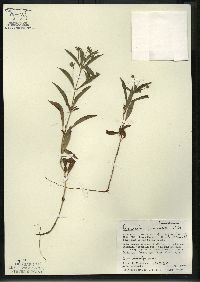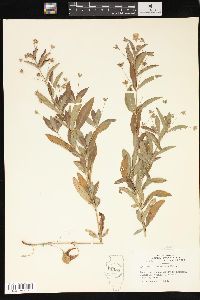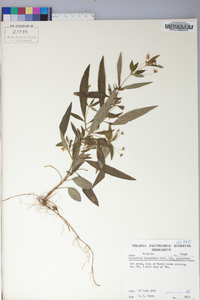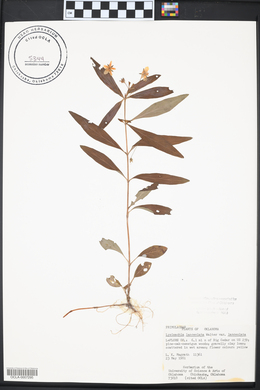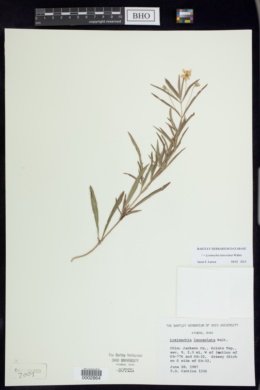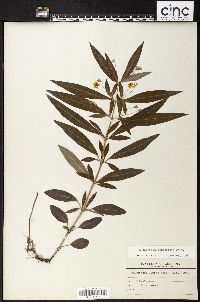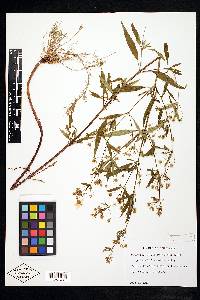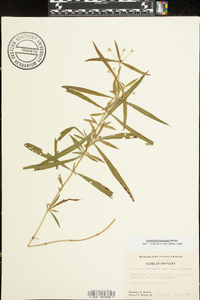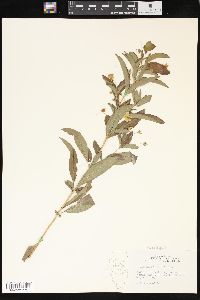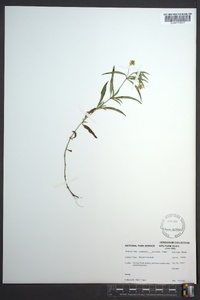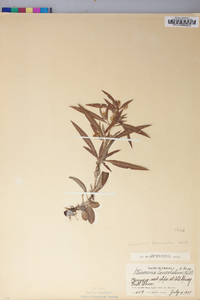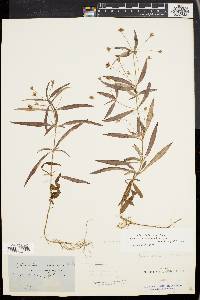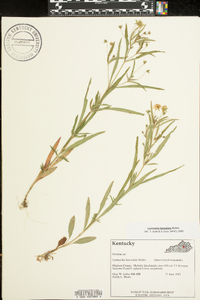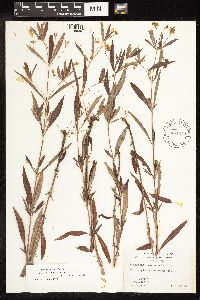Lysimachia lanceolata
|
|
|
|
Family: Primulaceae
Lance-Leaf Yellow-Loosestrife, more...lanceleaf loosestrife
|
Stems erect, simple or sometimes branched distally, 1-10 dm, glabrous (rarely sparsely stipitate-glandular or pubescent near nodes); rhizomes slender; bulblets absent. Leaves opposite or whorled near stem apex, dimorphic; distal petioles absent or 0.1-0.7 cm, proximal 0.3-2(-3.5) cm, ciliate proximally, cilia 0.3-1.2(-2) mm; distal blades narrowly elliptic to elliptic-lanceolate or linear-lanceolate, proximal blades broadly elliptic or lanceolate, distal 3-18 × 0.2-1.6 cm, proximal 2-5 × 0.6-1.8 cm, bases of distal leaves cuneate, decurrent, bases of proximal leaves rounded to obtuse or cuneate, decurrent, margins entire (rarely serrulate), plane, ciliolate proximally, apex rounded to acute or acuminate, surfaces not punctate, glabrous; venation pinnate-arcuate. Inflorescences axillary, solitary flowers. Pedicels 1-5 cm, glabrous to sparsely stipitate-glandular (rarely pubescent). Flowers: sepals 5, calyx not streaked, 3.5-8(-10) mm, glabrous or stipitate-glandular, lobes narrowly lanceolate to ovate, margins thin; petals 5, corolla yellow, sometimes with slightly reddish base, not streaked, rotate, 4-10 mm, lobes with margins slightly erose apically, apex apiculate or mucronate, sparsely stipitate-glandular adaxially; filaments distinct or nearly so, shorter than corolla; staminodes 0.7-1 mm. Capsules 2-5 mm, usually not punctate, glabrous or slightly stipitate-glandular distally. 2n = 34. Flowering summer-fall. Moist roadsides, mixed and deciduous forests, edges of wet meadows, lake shores, swales in open prairie, rocky sites; 0-1600 m; Man., Ont.; Ala., Ark., Del., D.C., Fla., Ga., Ill., Ind., Iowa, Ky., La., Md., Mich., Miss., Mo., N.J., N.C., N.Dak., Ohio, Okla., Pa., S.C., Tenn., Tex., Va., W.Va., Wis. Reports of Lysimachia lanceolata from Connecticut and Maine were based on specimens of L. hybrida initially identified as L. lanceolata subsp. hybrida. V. J. Coffey and S. B. Jones (1980), using garden studies, concluded that this species differed from the similar Lysimachia hybrida in some features, mostly dealing with leaf shape and amount of marginal cilia. Herbarium specimens examined by me showed much more overlap in these characters; clearly these two species need further work. Coffey and Jones also reported, interestingly, that L. lanceolata was less susceptible to aphid infestation than L. hybrida.
Erect from long, slender, stoloniform, superficial rhizomes, 2-9 dm, the lateral branches scarcely exceeding the subtending lvs; lower cauline lvs ovate to obovate, petioled; principal lvs linear to lanceolate or narrowly oblong, to 15 נ1.5 cm, often folded along the midrib, paler beneath, scabrellous on the margin or ciliate near the base, gradually tapering below, often with little or no distinction of petiole and blade; cal-lobes firm, 4-7 mm, the nerves, especially the lateral ones, obscure or hidden; cor-lobes 5-10 נ4-6 mm; fr 2-4.5 mm thick; 2n=34. Moist or wet woods and prairies; N.J. and Pa. to n. Fla., w. to Wis., Io., Mo., and e. Tex. June-Aug. (Steironema l.; S. heterophyllum) Gleason, Henry A. & Cronquist, Arthur J. 1991. Manual of vascular plants of northeastern United States and adjacent Canada. lxxv + 910 pp. ©The New York Botanical Garden. All rights reserved. Used by permission. From Flora of Indiana (1940) by Charles C. Deam Rather frequent in small colonies in dry soil on the crests and slopes of black and white oak ridges, in dry prairies, and rarely in moist soil and then usually in a slightly acid soil and usually associated with black chokeberry or sweet gum. In the woods it is most commonly associated with black and white oak. Small plants usually have their leaf blades more or less folded inward. The fact that this species is difficult to separate from the next one [Lysimachia hybrida] led me to place it under cultivation. I have found it very responsive to light and moisture. I think these two factors and temperature greatly change the appearance of the mature plants. The plants send up one or two sets of basal leaves late in autumn or early winter. These leaves are usually short and obtuse and have long petioles. In mild winters when the crown of the plant is protected these basal leaves persist, sometimes until maturity. In some plants these early leaves are killed and no leaves will be seen from the first few short internodes. Crowding, too, has much the same effect in killing off the early leaves. The length of the internodes is easily accounted for when the habitat and moisture are known. The next species usually grows in very wet places, usually inundated more or less until late spring. Many plants begin their growth under water and the submerged leaves die off and are later replaced by stipular leaves that are smaller and usually much narrower. In 1937 it was very wet and one bed of my plants set their principal cauline leaves at the third node, but usually these leaves begin about the fifth node. .…… Indiana Coefficient of Conservatism: C = 7 Wetland Indicator Status: FAC |
|
|
|

